
Real help. Real fast.
Call or text (650) 215-6464
Most replies within minutes · Mon–Fri 8–5 PT
Or [email protected] 24/7

Call or text (650) 215-6464
Most replies within minutes · Mon–Fri 8–5 PT
Or [email protected] 24/7

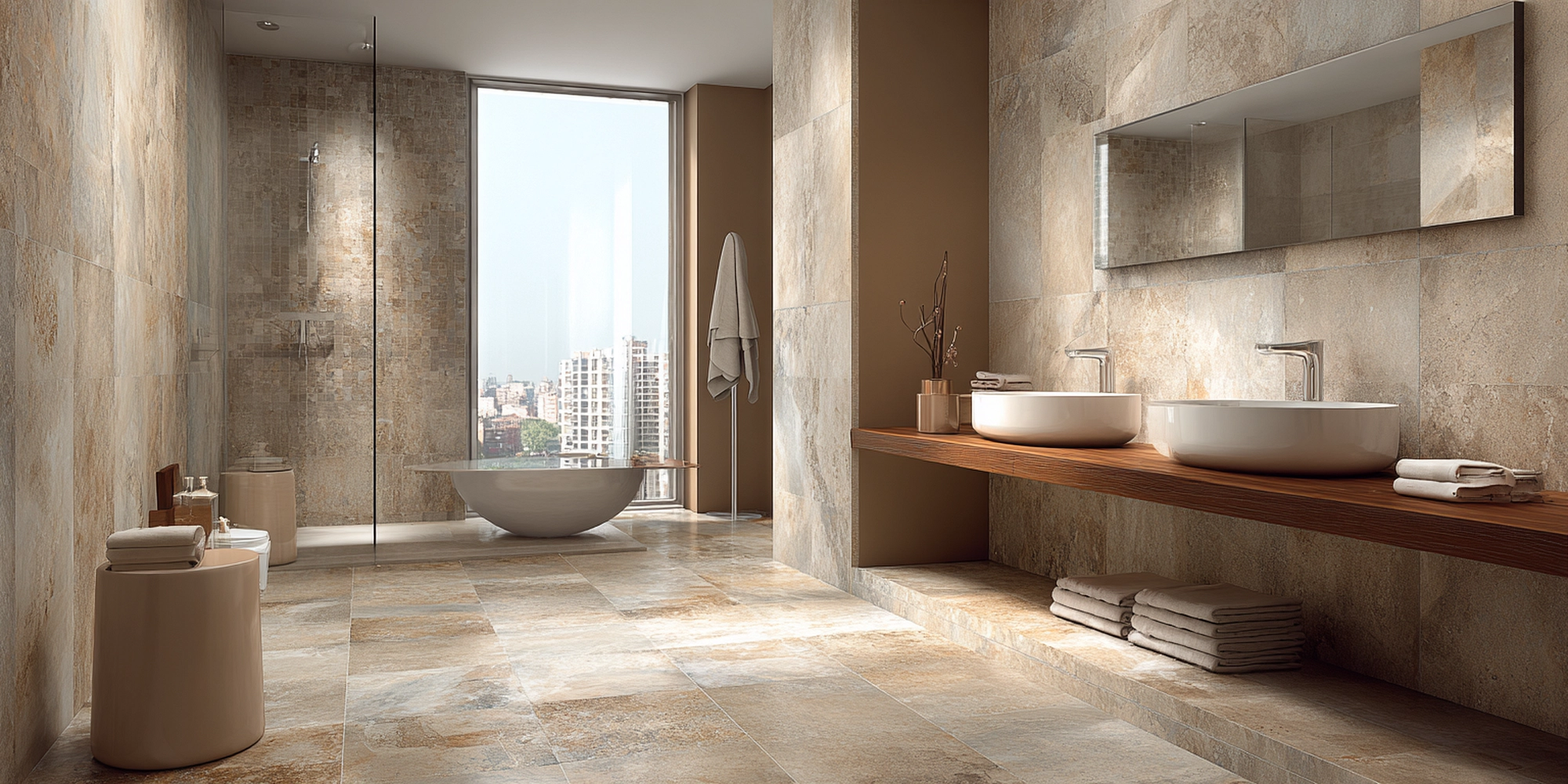
Summary: The importance of cohesive design cannot be overstated when creating a stunning and functional bathroom. Every element, from the fixtures to the tiles, should work together harmoniously to create a space that is both visually appealing and practical.
One design choice that has gained traction in recent years is using the same tile on the floor and shower walls of the bathroom. While this may seem like an unconventional approach, it can yield stunning results and offer a range of benefits for homeowners looking to renovate their bathrooms.
Let’s understand the concept of opting for the same tiles in your bathroom.
About the Author: Elchin, co-founder of Solidshape, brings over 20 years of design experience. He’s consulted on hundreds of projects—from malls to luxury homes—and is known for helping clients make smart, stylish tile choices.
One of the primary advantages of using the same tile on your bathroom floor and shower is the seamless, unified look it creates. By extending the same tile throughout the space, you eliminate visual breaks and create a sense of continuity that can make your bathroom feel more luxurious and well-designed.
This seamless appearance is particularly striking when using large-format tiles, as they minimize grout lines and create a sleek, modern aesthetic.
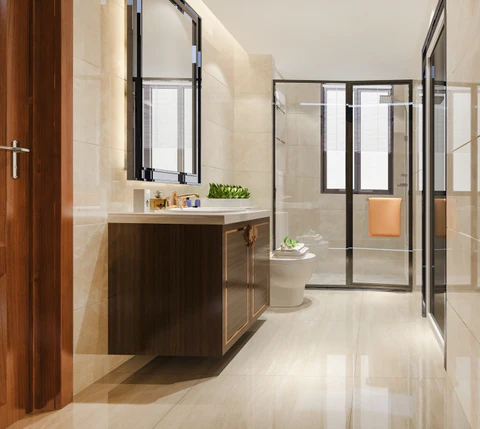
In smaller bathrooms, using the same tile on the floor and shower can be a game-changer. With a continuous flow of tile from the floor to the walls, you can trick the eye into perceiving the space as larger than it actually is.
The illusion of spaciousness is further enhanced when you opt for light-colored tiles, as they reflect light and make the room feel brighter and more open.
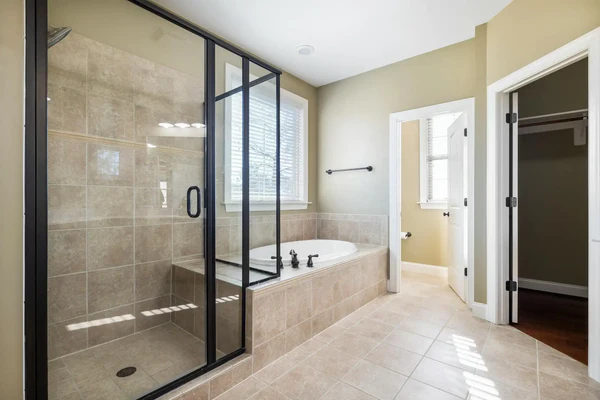
Another benefit of using the same tile throughout your bathroom is the ease of cleaning and maintenance. With a uniform tiling surface, you won’t have to worry about different cleaning methods or products for various areas of the room.
The simplicity can save you time and effort in the long run, making it easier to keep your bathroom looking pristine.
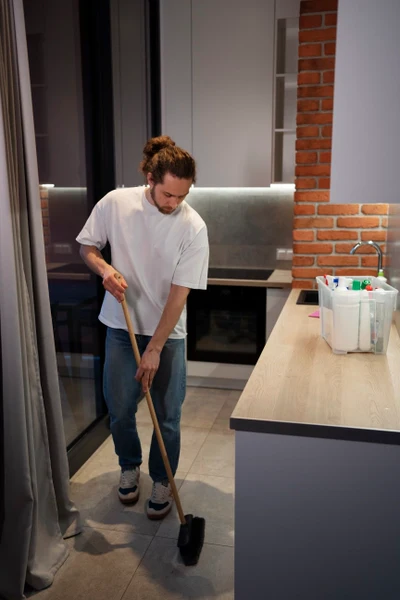
Having the same tiles in your bathroom floor and shower can also simplify the design process. Instead of agonizing over coordinating different tiles and ensuring they complement each other, you can focus on finding the perfect tile that suits your style and meets your functional needs.
The streamlined approach can make the renovation process less stressful and more enjoyable.

Using the same tile throughout your bathroom can also be a cost-effective solution. By purchasing a larger quantity of a single tile, you may be able to secure a better price from your supplier.
Additionally, it can reduce the amount of waste generated during the installation process, as there will be fewer cuts and less excess material.
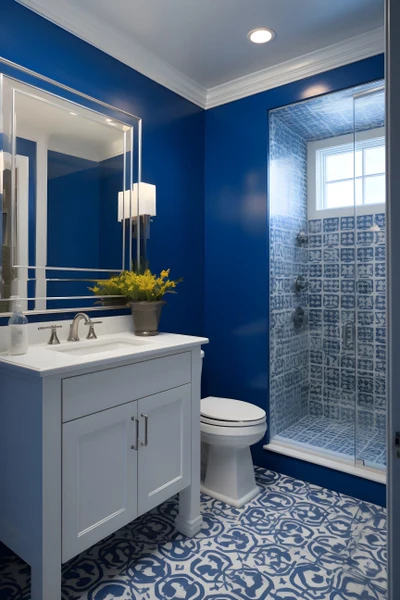
The prevalent answer to the frequently asked question, “Should I use the same tile for floor and shower?” is mostly a yes. Interior designers and contractors claim the numerous benefits to using this approach. However, it’s essential to consider potential drawbacks as well.
One concern with using the same tile throughout the bathroom is the potential lack of contrast or visual interest. If you choose a tile that is too plain or neutral, the space may feel monotonous or uninspired.
To combat this, consider using a tile with a unique texture, pattern, or color variation to add depth and character to the room.
Homeowners often wish to consider the resale value of the house and it indeed is a practical choice. So, while a cohesive bathroom design can be attractive to potential buyers, it’s essential to ensure that your tile choice is not too specific to your personal taste.
Opting for a classic, neutral tile that appeals to a wide range of buyers can help mitigate any negative impact on resale value.
When selecting a tile for both your bathroom floor and shower, it’s crucial to consider slip resistance. While some tiles may be suitable for use on shower walls, they may not provide adequate traction for flooring, especially when wet.
Be sure to choose a tile with a high slip resistance rating to ensure the safety and functionality of your bathroom.
Find anti-slip bathroom tiles for floors and shower with Solidshape’s premium collection. Explore options.
Although the same tiles across the bath area can simplify cleaning and maintenance, it’s essential to cater to the specific maintenance requirements of your chosen tile. Some materials, such as natural stone, may require regular sealing to prevent staining and water damage.
Remember to factor in these maintenance needs when making your tile selection.

When selecting a tile to use on both your bathroom floor and shower, you should consider several factors to ensure the best possible outcome.
Porcelain and ceramic tiles are the most popular choices for bathroom floors and showers due to their durability, water resistance, and ease of maintenance. These materials come in a wide range of colors, patterns, and textures, allowing you to find the perfect tile to suit your design preferences.
Porcelain tiles, in particular, are known for their low water absorption rates, making them an ideal choice for wet areas like showers.
As mentioned earlier, slip resistance is a critical factor when choosing a tile for your bathroom. Look for tiles with a high coefficient of friction (COF) rating, which indicates better traction and slip resistance.
Textured or matte-finished tiles generally offer more slip resistance than smooth, glossy tiles.
Another important consideration is the tile’s water absorption rate. In areas like bathrooms that are exposed to moisture, it’s crucial to choose tiles with a low water absorption rate (less than 0.5%) to prevent water damage and the growth of mold and mildew.
Choosing the same tiles for your bathroom floor and shower offers you the opportunity to play with different sizes and patterns to create visual interest and dimension. Larger tiles on the floor create a sense of spaciousness, and smaller tiles or mosaics on the shower walls ensures an intricate, detailed look.
You can also experiment with different tile patterns, such as herringbone or chevron, to add a unique touch to your bathroom design.
When searching for the perfect tile for your bathroom renovation, consider exploring Solidshape’s extensive collection of high-quality porcelain and ceramic tiles. Our curated selection offers a wide range of styles, colors, and sizes to suit any design aesthetic, from classic and timeless to modern and trendy.
With Solidshape’s commitment to quality and customer satisfaction, you can trust that you’re investing in a tile that will stand the test of time and elevate your bathroom design.
For homeowners who prefer a bit of variety in their bathroom design, there are several ways to incorporate the same tile, creating visual interest. Let’s explore some:
One way to break up the uniformity of using the same tile on your bathroom floor and shower is to incorporate coordinating accent tiles. This could be a strip of mosaic tiles along the shower wall or a border of contrasting tiles around the perimeter of the floor.
By using accent tiles that complement your main tile, you can add visual interest while maintaining a sense of harmony and cohesion.
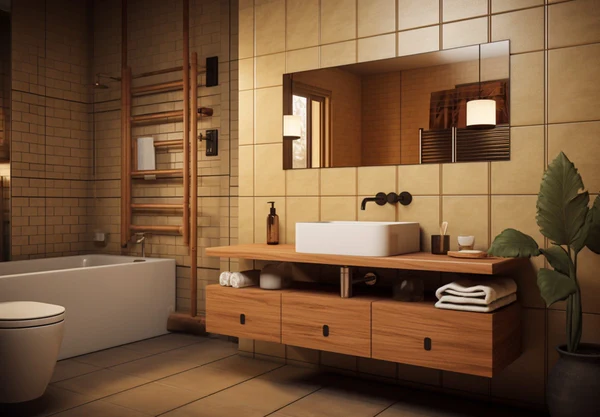
Another option is to use the same tile in different sizes on your bathroom floor and shower. For example, you could use larger tiles on the floor and smaller tiles of the same material and color on the shower walls. It creates a subtle variation in texture and scale while still maintaining a unified look.
If you want to use the same tile on your bathroom floor and shower but crave a bit of contrast, consider mixing finishes. For instance, you could use a matte-finished tile on the floor for slip resistance and a glossy version of the same tile on the shower walls for a sleek, reflective look.
This approach adds depth and dimension to your bathroom design while still keeping the overall aesthetic cohesive.
Using the same tile on your bathroom floor and shower is a design choice that offers a range of benefits, from creating a seamless, visually appealing space to simplifying maintenance and potentially reducing costs.
However, it’s essential to consider factors such as slip resistance, water absorption rates, and the overall impact on your home’s resale value when making this decision.
The choice to match your bathroom floor and shower tiles is a personal one that should reflect your individual style and preferences. Select a high-quality tile that meets your functional and aesthetic needs to create a stunning bathroom.
If you’re looking for the perfect tile to use on your bathroom floor and shower, look no further than Solidshape’s extensive collection of premium porcelain and ceramic tiles.
Our expert team is dedicated to helping you find the ideal tile to suit your design vision and ensure a successful renovation project.
Take the first step toward creating your cohesive bathroom!
Yes, using the same tile on your bathroom floor and shower wall is a design choice that can create a seamless, cohesive look. However, it’s important to choose a tile that is suitable for both applications, with a high slip resistance rating and low water absorption rate.
Whether or not to use the same tile on your bathroom floor and shower is a personal decision based on your design preferences and functional requirements. While using the same tile can create a unified, spacious look, some homeowners may prefer the visual interest and contrast of using different tiles in these areas.
The best types of tile for bathroom floors are those that offer high slip resistance, low water absorption rates, and durability. Porcelain and ceramic tiles are popular choices for their water resistance, ease of maintenance, and versatility in terms of color, pattern, and texture.
When selecting a tile for your bathroom floor, look for options with a high coefficient of friction (COF) rating and a water absorption rate of less than 0.5%.